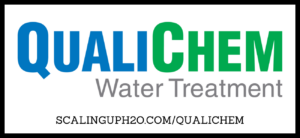 We have the privilege of welcoming back Janet E. Stout, Ph.D., President of Special Pathogens Technology and the founder of Special Pathogens Laboratory, A Pace Laboratory. Dr. Stout has academic affiliations with the School of Public Health and Swanson School of Engineering at the University of Pittsburgh. A self-described “Legionellologist”, Dr. Stout’s more than 30 years of research has defined the epidemiology, microbiology and prevention approaches for controlling Legionella growth in building water systems.
We have the privilege of welcoming back Janet E. Stout, Ph.D., President of Special Pathogens Technology and the founder of Special Pathogens Laboratory, A Pace Laboratory. Dr. Stout has academic affiliations with the School of Public Health and Swanson School of Engineering at the University of Pittsburgh. A self-described “Legionellologist”, Dr. Stout’s more than 30 years of research has defined the epidemiology, microbiology and prevention approaches for controlling Legionella growth in building water systems.
In our most recent interview, Dr. Janet Stout shared what was new with Legionella standards, what state health departments are doing to combat Legionella, and she answers your burning question of “Are Legionella cases truly on the rise” with data and statistics. This is a Legionella episode you cannot afford to miss, so let’s scale up our Legionella knowledge with Dr. Stout. Also, don’t forget to check out our free Legionella Resources page where we have listed all of the articles, standards, and tools mentioned in this interview.
What Is New with Legionella Standards? How Does It Impact the Water Treatment Industry?
Dr. Stout highlights several key updates:
Association for the Advancement of Medical Instrumentation (AAMI) TIR34:2023
Published in Fall 2023, TIR34 focuses on water quality for reprocessing medical devices. Dr. Stout emphasizes, “The problem is infection. The solution is the quality of the water.” “There are clear chemical and microbial parameters, and these healthcare facilities need your assistance, water professionals,” Dr. Stout encourages.
ANSI/AAMI ST108:2023
This new standard, “Water for the processing of medical devices,” emphasizes the critical role of monitoring water quality to prevent microbial proliferation. ST108 is a significant step forward for patient safety. “I see so many positive indications of progress and prevention, and that’s good for everyone,” shares Dr. Stout.
General Services Administration (GSA) Order PBS 1000.7A
Effective in 2024, this order mandates comprehensive water testing across federal buildings to ensure health and safety. It includes stringent testing protocols for contaminants like Legionella. Compliance requires professionals to hold certifications such as ASSE 12080 or be certified industrial hygienists (CIH). Dr. Stout remarks, “It’s such a big deal that you have to be ASSE 12080 certified to service government buildings now, I’m really impressed by GSA.”
American Water Works Association (AWWA) Guidance
Set to be updated in 2024 or 2025, the new standard will replace AWWA C651-C652 and will likely be titled “Disinfecting Potable Water.” This new guidance will provide updated protocols for disinfecting water-storage facilities, so be on the lookout for this new one.
ANSI/ASHRAE Standard 514:2023
This standard focuses on risk management for building water systems, covering physical, chemical, and microbial hazards. It provides comprehensive guidelines for designing, building, maintaining, and operating water systems to protect building occupants.
Challenge to the Listener:
- Educate Yourself: Familiarize yourself with the latest standards, including TIR34, ST108, GSA Order PBS 1000.7A, and ANSI/ASHRAE Standard 514.
- Engage with Clients: Reach out to healthcare facilities and federal buildings to offer your expertise in water management and help them navigate the new requirements.
- Stay Informed: Keep an eye on updates from organizations like AAMI, ASHRAE, GSA, and AWWA to stay ahead of industry changes.
What’s Going on in Ohio? Will Other States Follow Ohio?
Ohio’s Proactive Approach
Dr. Janet Stout praises Ohio’s innovative approach to managing Legionella risks. Unlike most areas where Legionella water management is voluntary, Ohio has taken a significant step by mandating it through hospital licensure codes. This mandate requires hospitals to have a water management plan and to test for Legionella, making compliance a condition for maintaining their licenses. The new regulation, scheduled to take effect in October 2024, aims to enhance infection control and manage the risk of waterborne pathogens, particularly Legionella.
High Incidence of Legionnaires Disease
Ohio’s proactive stance is partly driven by its high incidence of Legionnaires disease. The state, along with Maryland, Pennsylvania, and New York, consistently reports high numbers of cases. Ohio’s health department has noted a significant increase in cases from 2022 to 2023. This alarming trend highlights the urgent need for effective water management and testing protocols.
The Ohio Regulation Specifies Detailed Requirements for Hospitals:
- Each hospital must conduct Legionella testing within the first twelve months.
- Two validation tests must be performed, no fewer than four months apart and no more than six months apart.
- The regulation includes explicit language to ensure rigorous water management and Legionella testing.
The Future for Other States
Dr. Stout is hopeful that other states will follow Ohio’s example. She mentions ongoing legislative efforts in states like New Jersey and Pennsylvania, although the process is slow. Ohio’s innovative and mandatory approach to Legionella water management sets a precedent that could influence other states. Dr. Stout’s optimism reflects a broader movement towards more stringent and proactive water management practices across the country. As more states recognize the importance of these measures, we can expect a gradual but significant shift towards better management of Legionella and other waterborne pathogens.
Are Legionella Cases Truly on the Rise?
“Legionella is on the rise,” Dr. Stout shares. “It’s not increasing just because we are doing more testing.” She also points to changing weather patterns as a contributing factor. “There’s a global shift with Legionnaires’ disease cases extending from summer into fall. The season is getting longer, and things are staying warmer longer.”
This observation highlights the need for a deeper understanding of how environmental factors and public health practices influence Legionella prevalence.
We hope you found these insights from Dr. Janet Stout valuable. Legionella management is a critical aspect of industrial water treatment, and staying informed and proactive is key to ensuring the safety and health of building occupants. As always, we encourage you to continue learning, sharing, and growing within our community.
Thank you for being a dedicated member of the Scaling UP! H2O community and for celebrating Legionella Awareness Month with us. Together, we can make a significant impact in the fight against Legionnaires’ disease.
Timestamps
01:00 – Upcoming Events for Water Treatment Professionals
06:00 – Interview with Janet E. Stout, Ph.D. is President of Special Pathogens Technology and the founder of Special Pathogens Laboratory, A Pace Laboratory
01:14:20 – Drop by Drop with James McDonald
Quotes
“It is happy Legionella Awareness Month because we are making progress.” – Dr. Janet Stout
“I give Ohio a round of applause for doing the right thing!” – Dr. Janet Stout
“You don’t know if your efforts are working unless you test for it.”- Dr. Janet Stout
“This is unacceptable: Legionnaires’ disease remains a very high mortality infection. 25-30% of hospitalized patients who get legionella from the hospital die.” – Dr. Janet Stout
“I see so many good indications of progress and prevention.” – Dr. Janet Stout
“We need to make progress on mandatory testing because it’s the only way to understand risk. We want to mitigate the risk.” – Dr. Janet Stout
Connect with Janet E. Stout, Ph.D.
Phone: 412.281.5335
Email: jstout@specialpathogenslab.com
Website: www.specialpathogenslab.com
ST108, Utility Water (UWK) Kit
LinkedIn: in/janet-e-stout-ph-d-32607612
company/special-pathogens-laboratory
Drop By Drop with James
In today’s episode, I have a challenge for you. The challenge is…update your LinkedIn profile. Do it right now. If you’re driving, do it when you next stop. The days of LinkedIn being just a resume are long gone. Today, it’s your calling card, your networking tool, and a learning tool. Check out your name. Did you accidentally flip your name, so your last name comes before your first? If you did, fix it now. Is the name listed the one you actually go by? If you go by a nickname, either put it in parenthesis or replace your formal name with it. What does the headline right below your name say? You get 3 seconds to catch someone’s attention. Does this little headline phrase under your name really say what you do and who you are? What about your picture? Do you look like the person people in your network would actually meet in person or are you dressed in a tuxedo or bridesmaid gown from the last wedding you were in? I doubt many of us are doing our jobs in tuxedos and gowns. Does your picture look unprofessional in other ways, as well? The first things people see when looking at your LinkedIn calling card, as I call it, is your name, face, and headline. Ensuring these three items are correct is the first place to start. Then you can move on to experience, education (if applicable), etc.
2024 Events for Water Professionals
Check out our Scaling UP! H2O Events Calendar where we’ve listed every event Water Treaters should be aware of by clicking HERE.

